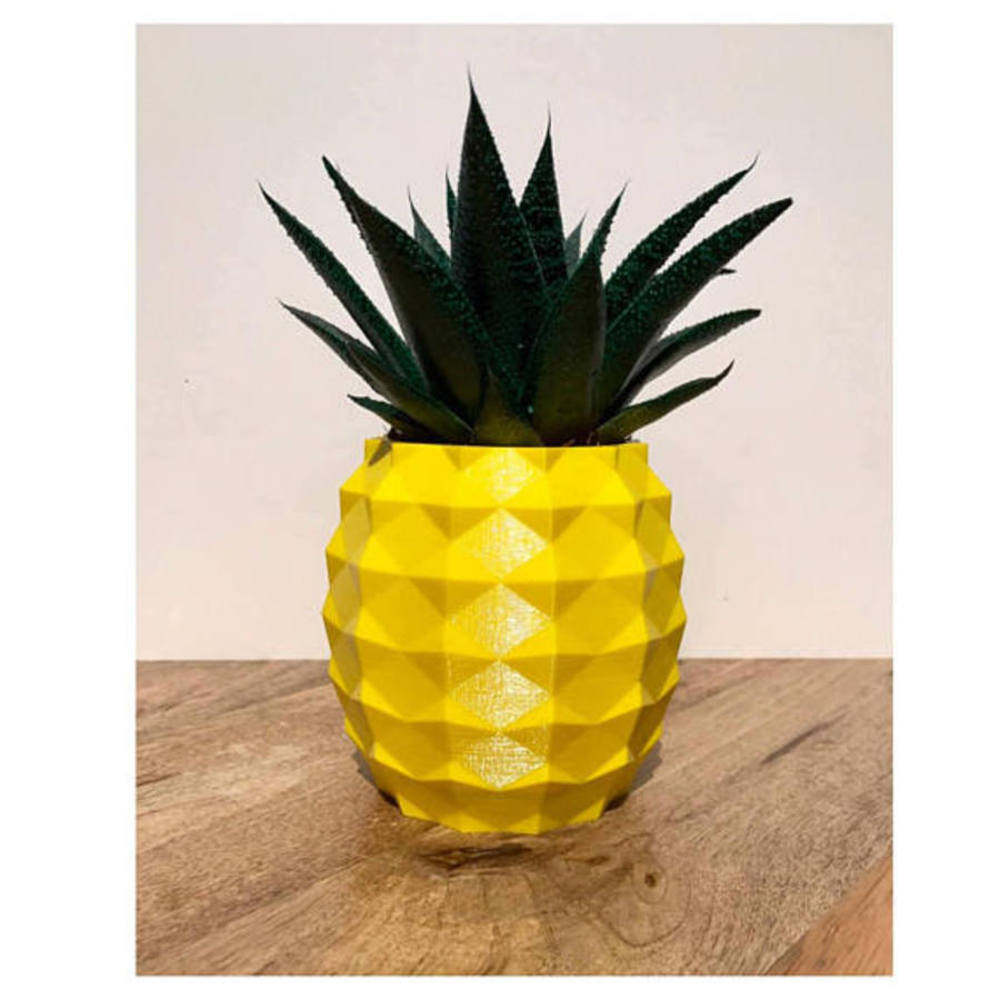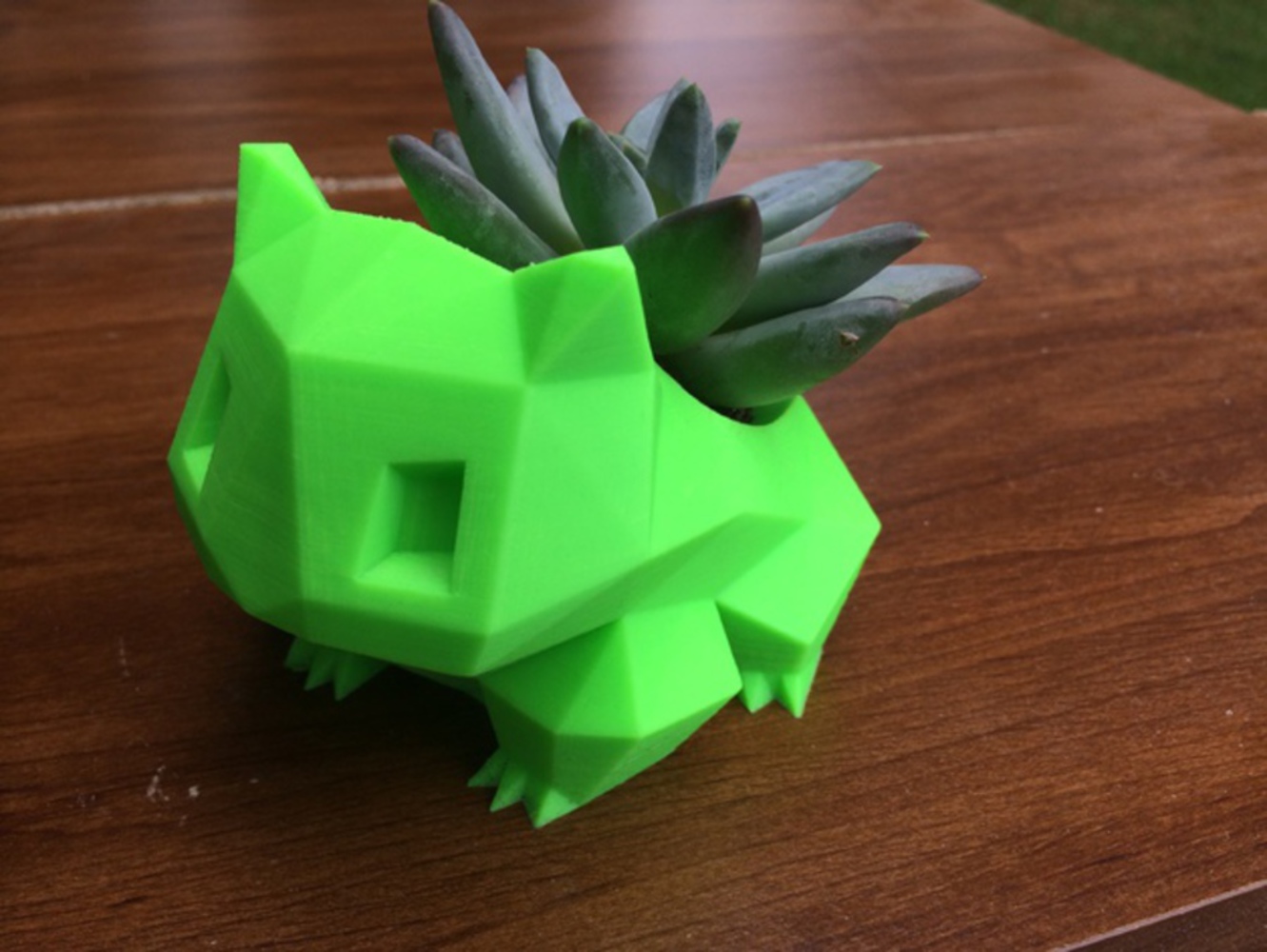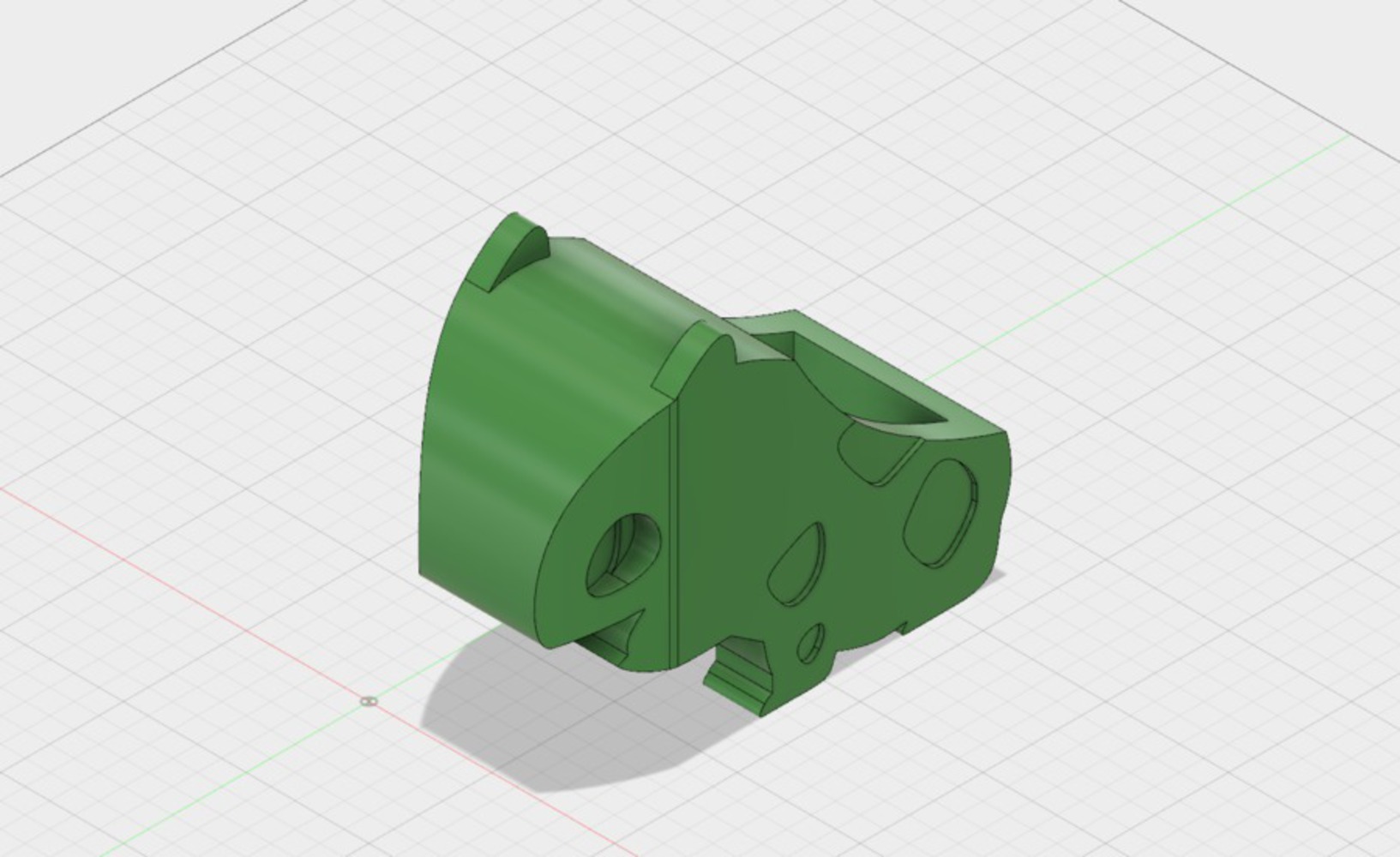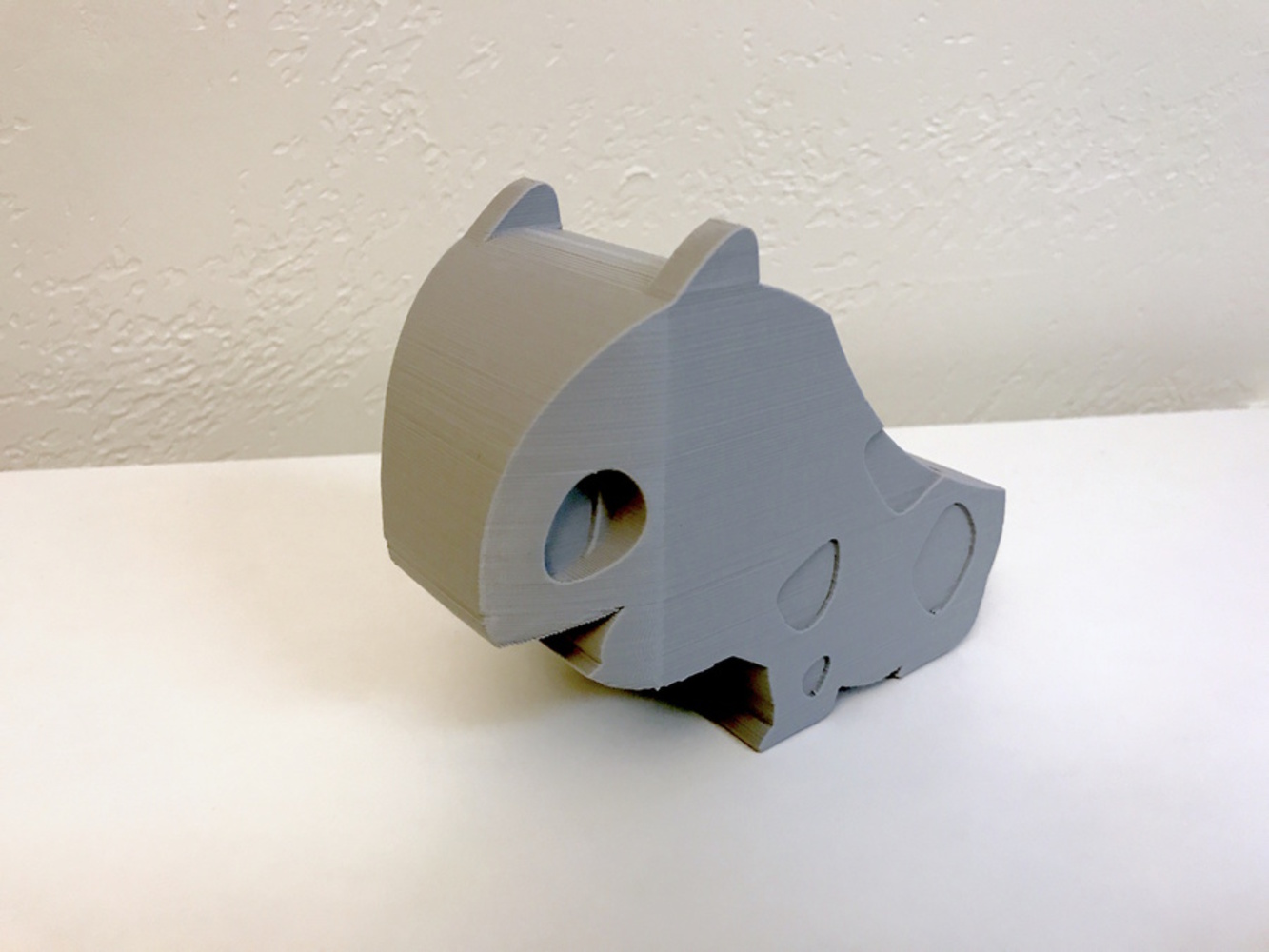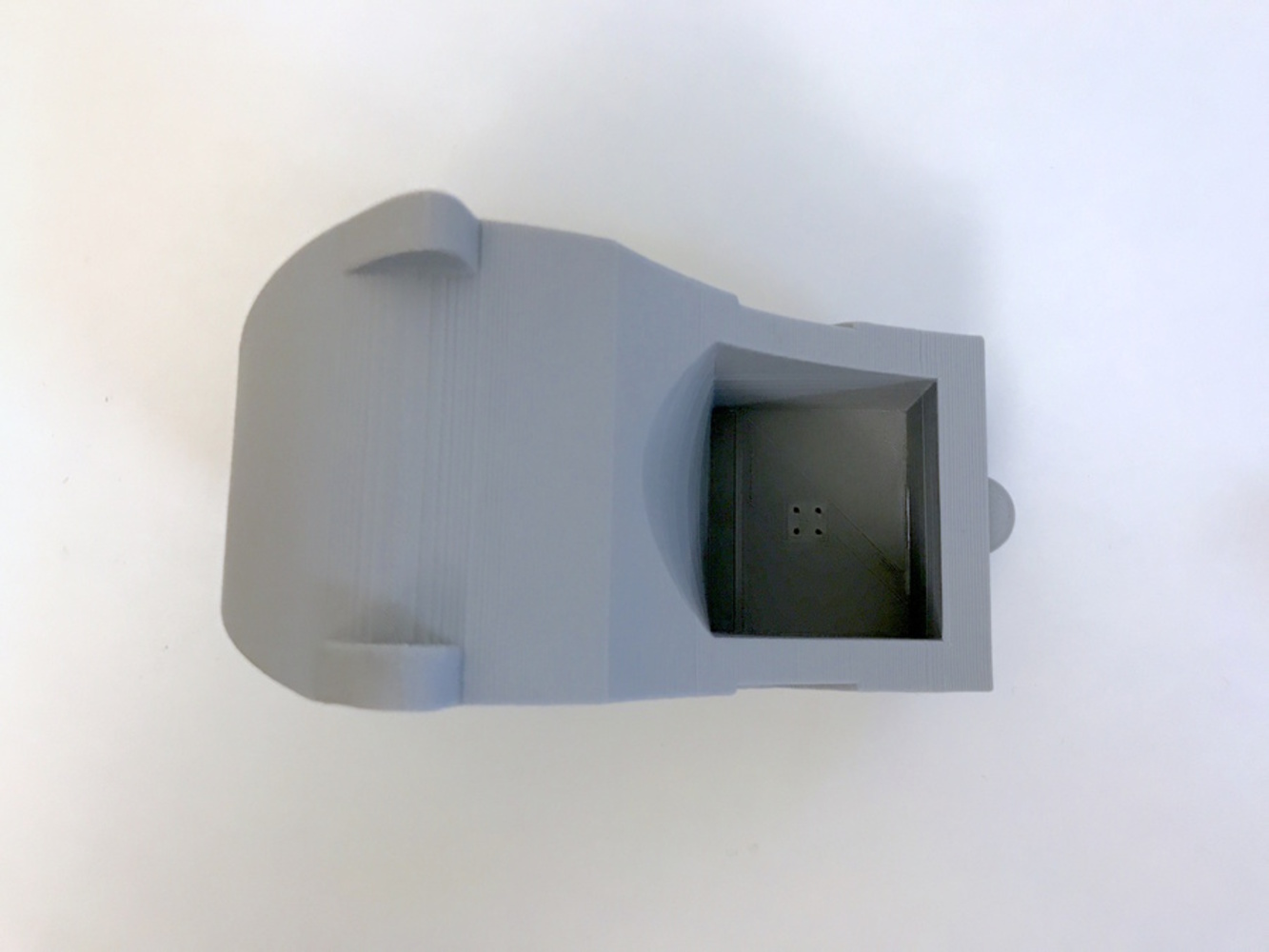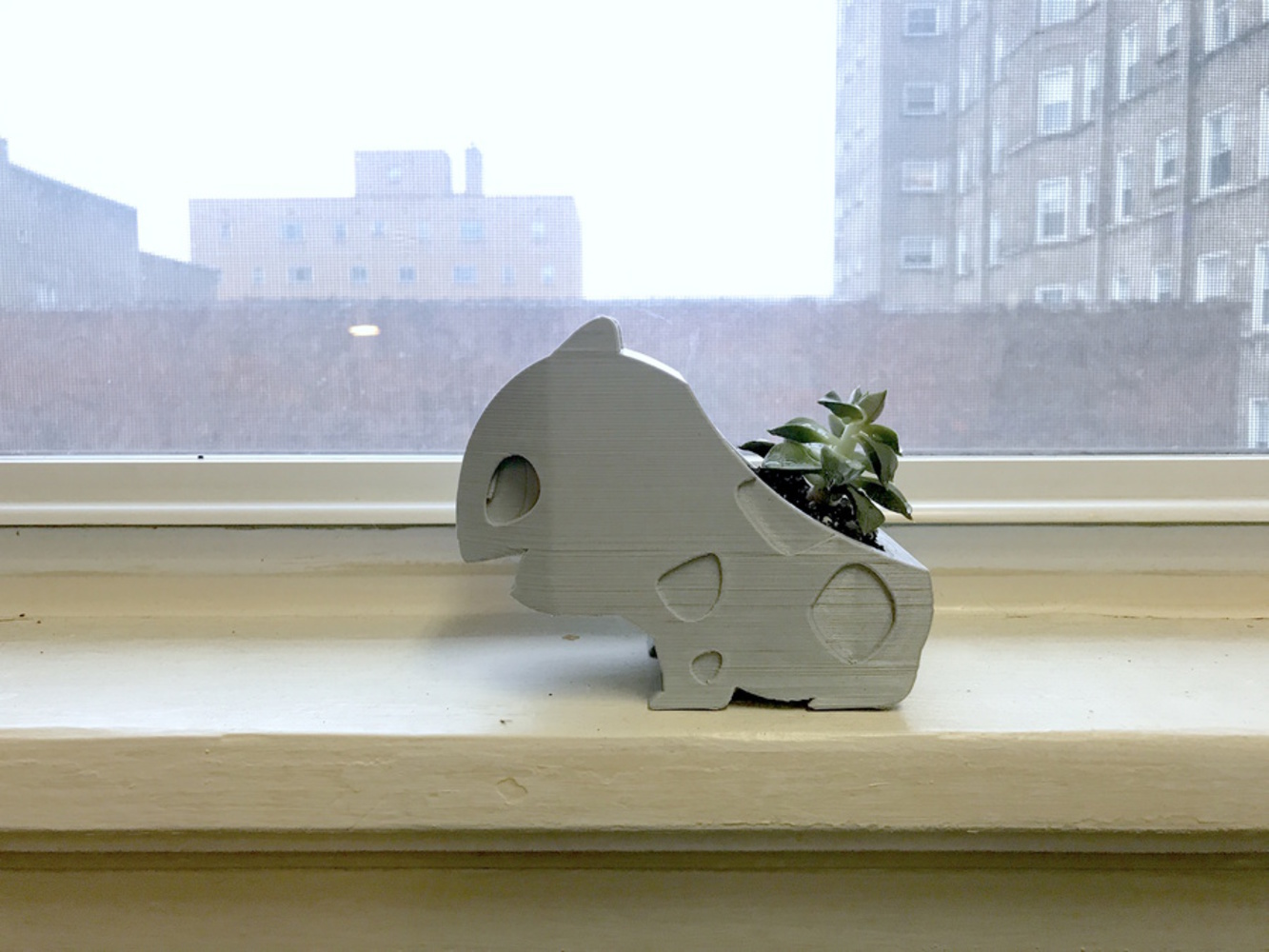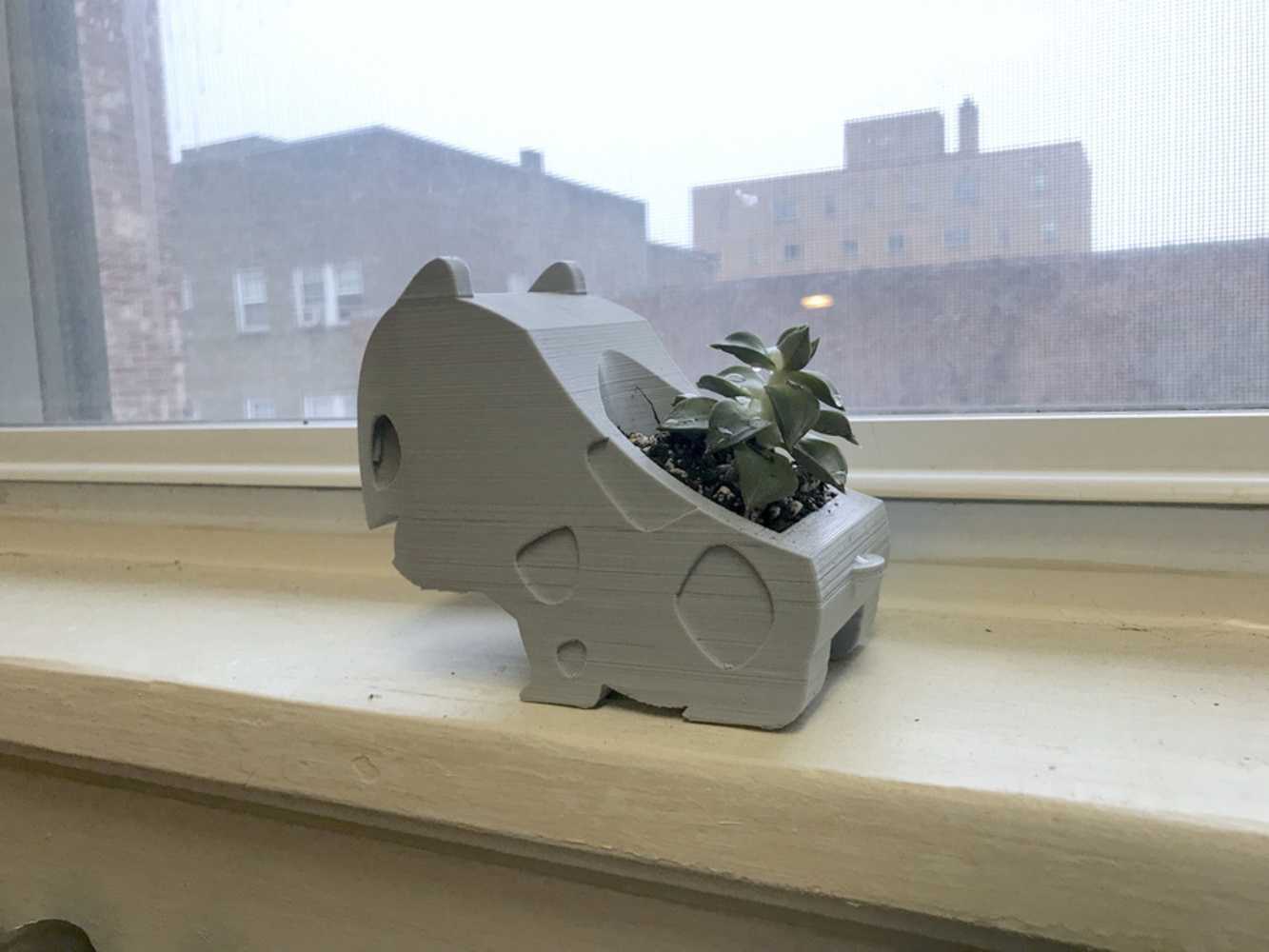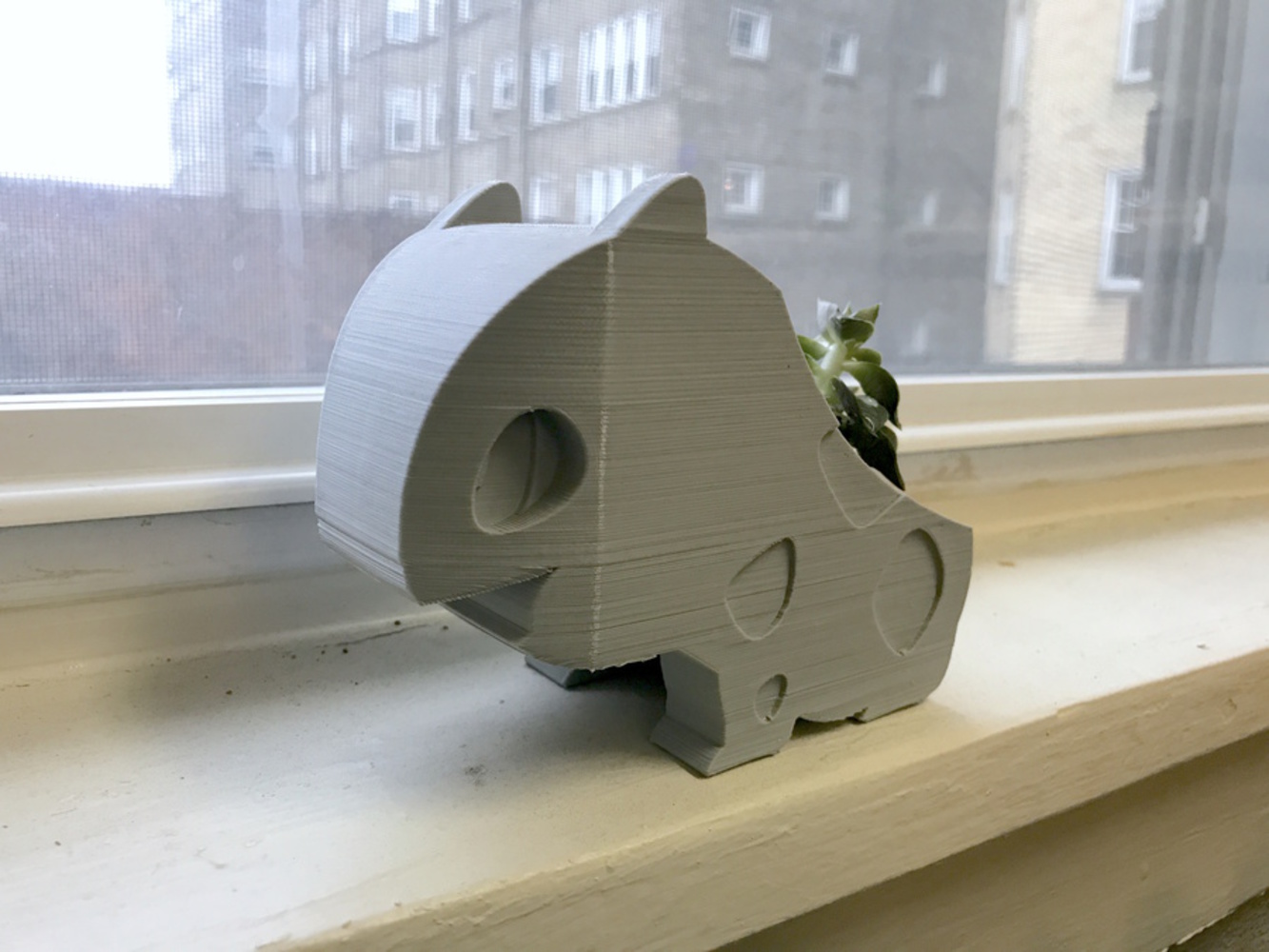Process + Procedure
I used Fusion360 to model my design. Since bulbasaur is only symmetrical on the z-axis, I chose a side view bulbasaur as a reference image. I used the spline tool to trace its shape on the z-plane. Then, I extruded the sketch and eyeballed the dimensions so it appeared proportional. I soon realised this model would be too small to fit my succulent plant, so I scaled the body 2x.
Next, I created construction planes that bisected bulbasaur parallel to the z-plane, and I drew sketches of the legs. Using the extrusion tool, I used these sketches to cut into the body to create the 4 distinct legs.
My next step was to create the holder portion of the planter. I drew a rectangle with one arced side (this was copied from the inspiration bulbasaur planter) and cut into the body to form an approximate 2"x2" shape. I then sketched and cut four small drainage holes through the bottom. This would form the holder for the succulent plant.
Then, I felt the design wasn't very recognizable as bulbasaur, so I added more details. Using the spline tool, I outlined bulbasaur's eyes and spot pattern and cut a few millimeters into the body. However, the head of bulbasaur was still too blocky, so I used a the tool split body to cut an angle on both sides of the head. This led me to readjust the cut distance for the eye details.
Finally, my design was ready to print! I scaled it down to 75% and sent it to NVBots. It took 10+ hours to print.
